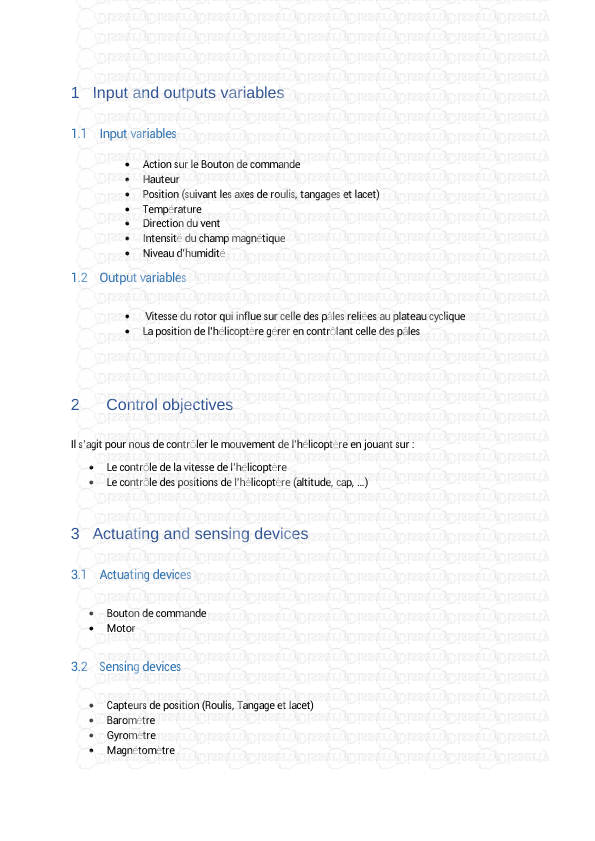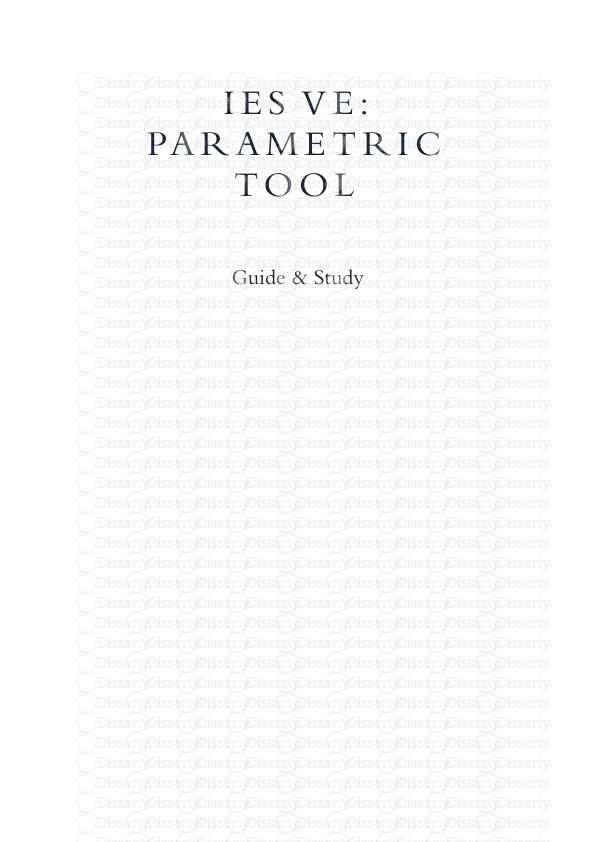I E S V E : PA R A M E T R I C TO O L Guide & Study T H E T O O L The parametri
I E S V E : PA R A M E T R I C TO O L Guide & Study T H E T O O L The parametric batch processor (PBP) in IES VE allows simultaneous simulations of different models/the same model with varying parameters set within the tool. The model used is a 4-floor office building, located in London, with some vegetation north-east. Figure 1: study model in IES VE o b j e c t i v e s Run parallel simulations for different orientation, WWR and overhang configurations. WO R K F L OW Define model geometry & data Define variant data choices Setup and add to queue (ApcheSIM) Repeat for each model Run PBP Select .apr files to run Select variables to change Set other options (scale, range, …) Run parallel simulations S T E P 1 - S E T U P Defining model in the VE using Building Template Manager as you typically would. To set up the variable simulations later, define also other options, eg. overhang added onto external windows. S T E P 2 – S I M S E T U P After running SunCast for each model (orientations and WWR was set up in different files), the Apache Simulation can be set up, specifying name, simulation and output options as usual. Instead of simulating, the model is added to queue, which creates a new file of .apr format in the VE folder of the model. After setting up all models (or just one), the parametric batch processor can be launched from the navigator tab. Here, all the simulation models can be added and the variables and number of simulations for each model can be determined. The .apr files for each model can be found in the VE model folder > parametric_batch > modelname.apr. Under “variable”, the parameter you wish to change can be selected. In this case, we have variable overhang lengths, so different external window configurations were selected. It is possible to modify the following variables: CONSTRUCTIONS ENERGY External Floor Heating Setpoint (°C) External Wall Cooling Setpoint (°C) Internal Wall Infiltration Rate (Ac/hr) Internal Floor/Ceiling Aux Air Rate (Ac/hr) Roof Nat Vent Air Rate (Ac/hr) External Window Photovoltaics Area (m2) External Rooflight Wind Turbine Power (kW) While constructions can be varied depending on configurations created previously in Building Template manager, the energy related variables can be specified with minimum, maximum and iteration step size. S T E P 3 – r u n & r e s u l t After the setup, the simulations can be run at once. The results can be found in VistaPro as results files: TIME needed for 12 simulations in PBP = 6:30 min TIME needed for 1 conventional sim = 0:33 min c o n c l u s i o n In total, the parallel simulations do not save time, as the total time is the same. Also, the VE cannot be used while simulations are running. However, it does make the process simpler as the setup is simpler for the selected variables and suncast/apache do not have to be run separately. In total, this will still save time and prevent mistakes in the process. uploads/s1/ ies-ve-parametric-tool-guide-amp-study.pdf
Documents similaires








-
26
-
0
-
0
Licence et utilisation
Gratuit pour un usage personnel Attribution requise- Détails
- Publié le Mai 20, 2022
- Catégorie Administration
- Langue French
- Taille du fichier 0.3085MB


